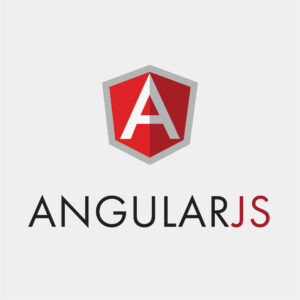Six Reasons to Try Angular
Don’t Miss Out on This Amazing Framework!
by Kevin Gardner
Despite its popularity, not everyone has switched to Angular. In this article, Kevin Gardner explains six compelling reasons why Angular is a framework you should consider.
If you haven’t tried Angular yet, you really don’t know what you are missing. This framework arguably makes the model-view-controller (MVC) components look good and in their right place. Many frameworks available today are merely bundles of tools that often do not integrate well together. Angular stands out by ensuring that each tool works seamlessly with the others.
The widespread use of Angular is evident in the countless websites that adopt this framework. Notable companies using Angular include ABC News, NBC, and Intel. This popularity comes from its convenience, speed, scalability, low cost, and better performance.. Here are six reasons why you should consider Angular as the preferred framework for your projects:
1. Handles MVC Well
Using other frameworks often means you need to break your app into MVC parts. You also have to write code to connect these parts.
Angular simplifies this process by implementing MVC for you. With Angular, you don’t need to write extra code to link the different MVC components. This lets you focus on development.
2. A Strong Community
Being part of a community is crucial for developers. Angular has a large, well-developed community of users. You can join online forums and attend conferences. You can also find many books and online resources about this framework.
Engaging with this community can keep you updated on trends and help you connect with potential clients.
3. Declarative User Interface
Angular utilizes HTML to define the user interface, making it more intuitive than using JavaScript for procedural definitions. HTML is a declarative language. This makes it easier for UI developers to work together. It also reduces the chance of breaking the interface.
4. POJO Data Models
Angular uses plain old JavaScript objects (POJO), eliminating the need for extraneous setter and getter functions. This results in cleaner and more intuitive code. The data models in Angular act as temporary storage. They make it easy to change data and update automatically when changes happen.
5. Backed by Google
Angular has the backing of Google, which gives developers confidence in its future. Created by talented engineers at Google, Angular is designed for high performance and reliability. This makes it a popular choice for developers over other JavaScript frameworks.
6. Directives Control
Angular’s pattern language is based on HTML. This allows developers to use directives to create custom attributes that are not in standard HTML. This enhances code logic and can significantly improve output efficiency.
Parting Shot
If you want to speed up your development process, try using Angular today. You can enjoy the benefits mentioned above and more.
Discover the Angular track of iJS!
React: Seven Reasons to Make the Switch
It’s Simple, Really
The success of Facebook and Instagram highlights the effectiveness of React as a solid foundation for modern applications. In this section, Vlad Pshenychka explores the top reasons to adopt React for your next project.
by Vlad Pshenychka
What is React?
React is an open-source JavaScript library designed to make web development simpler and more efficient. Developed through collaboration between Facebook, Instagram, and a robust community, React focuses on providing a comfortable way to create user interfaces.
Seven Reasons to Choose React
Here are some of the most compelling reasons to consider using React:
1. Simplicity of Usage
React’s simplicity is one of its strongest features. Compared to Angular, React offers a more straightforward programming model. React is not just for beginners.
It simplifies resource management. This makes it easier for experienced developers to refresh their skills. Familiarity with JSX and HTML is beneficial for success with React.
2. Developmental Flexibility
React introduces flexibility in the developmental and maintenance processes, aided by various side libraries. This allows developers to navigate restrictions and choose the best strategies for their frontend projects.
3. Virtual DOM
React uses the Virtual DOM to help developers create a cache in memory. This makes it easier to update what the browser shows. This innovation enhances performance and user experience.
4. Advanced App Performance
React addresses performance issues by automatically updating single-page applications, minimizing the need for UI reloads. This ensures a seamless experience on various devices, even if they have lower capabilities.
5. SEO Friendliness
One of the critical challenges with JavaScript frameworks is their compatibility with search engines. React helps resolve this by allowing server-side rendering, ensuring your app is indexed correctly by search engines. This can significantly improve your application’s visibility.
Also discover the React track of iJS!
6. Easier Interface Design
React simplifies interface design, enabling developers to manipulate key interface flows more efficiently. Features like nested views and loops facilitate the creation of complex UI components.
- Nested View: This feature allows developers to manage nested elements easily, enhancing code organization.
- Loop: Both React and Angular support loops, but React’s way is simpler. This makes it easier for developers to create views.
7. Alternatives
React can seamlessly integrate with other libraries, including Angular, Backbone, and jQuery. It encompasses a wide array of functionalities, enhancing your existing JavaScript toolkit.
Conclusion about React
In summary, the React JavaScript library represents a revolutionary step in the software industry. The success of Facebook and Instagram underscores its effectiveness as a foundational tool for developers. We hope these reasons have convinced you to consider React for your next project.








 6 months access to session recordings.
6 months access to session recordings.